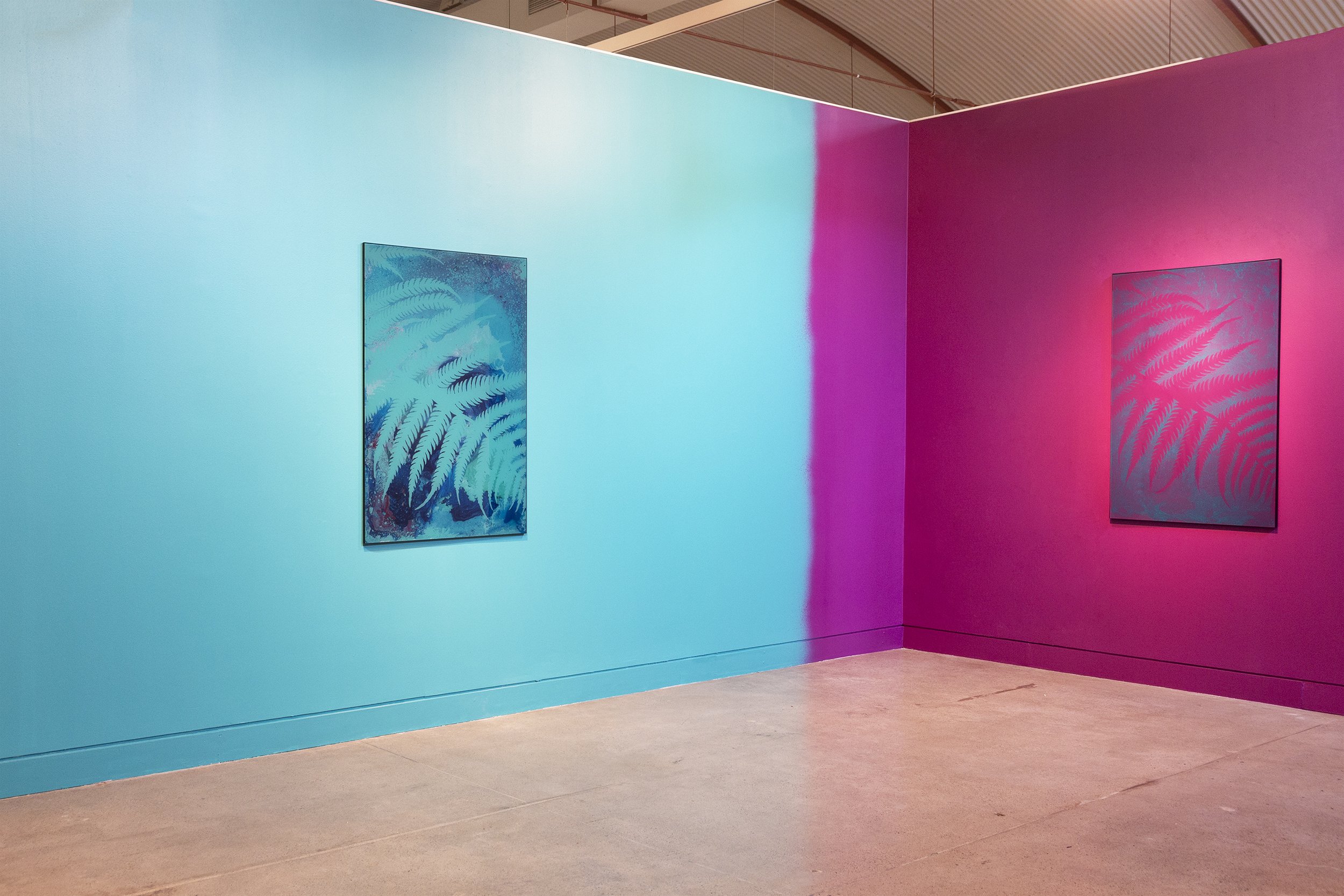
Flat Earth Society - Cement Fondu

Flat Earth Society - Cement Fondu Exhibition

Flat Earth Society - Cement Fondu Exhibition



Flat Earth Society - Cement Fondu Exhibition













The Project Space focuses on experimental, evolving activations and is curated to complement the gallery’s main exhibitions. To coincide with Flat Earth Society, the Project Space presents an installation by James Little titled Maybe the grass looks greener on the other side because it’s fake.
Set against hand-painted gradient walls, Little’s reflective artworks depict the repeated motif of ferns in an examination of the relationship between technology, the tangible world and the subsequent anxieties of society. As digital apps and screens increase in prevalence, artworks are frequently experienced via photographic reproduction. In an attempt to navigate our contemporary, often virtual environments, Little uses hand-painted acrylic and glass to reclaim the experience of viewing IRL. Their reflective glass surfaces make each work ‘un-instagramable’, obstructing the removal of context and content so often experienced online.
Maybe the grass looks greener on the other side because it’s fake applies philosopher Walter Benjamin’s theories of authenticity and media consumption to the navigation of contemporary digital environments. In his 1935 essay, ‘The Work of Art in the Age of Mechanical Reproduction’, Benjamin explored themes around the genuineness, context and authenticity of an artwork. For Benjamin, a photograph of a painting printed in a newspaper is presented “too quickly” for considered contemplation as opposed to experiencing the object’s physicality. Benjamin claimed that photographic reproduction removed the object or painting from its context, weakening or altering its original intention.
While Benjamin was responding to the rise of mass photographic and cinematic consumption in the early 20th century, the contemporary ‘image scroll’ of digital media lends new weight to his predictions. The superficiality and speed of contemporary consumption might be summarised as content consuming us, rather than the viewer consuming content.
The effects of contemporary digital culture has well-documented ramifications on mental health, especially through engagement with social networking sites. A recent study into the psychological consequences of social media found that average users experience increased anxiety, including feeling left out, detached or envious. Users subconsciously attempt to rectify these feelings by intensifying their time online in a cyclical coping mechanism that further fuels their anxieties.
Simultaneously paintings and mirrors, Little’s artworks refuse online presentation, defying this social media induced anxiety. Inherently linked to the spaces in which they are exhibited and to the viewer themselves, they create a site-specific spatial experience entirely anchored in the physical encounter and the context of the gallery.